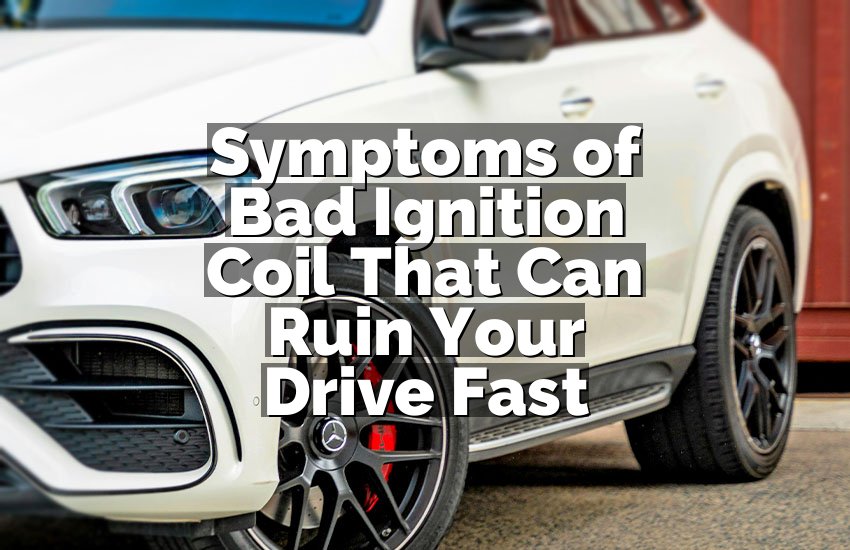You might not think about it much, but your car’s water pump is one of the most important parts under the hood. Without it, your engine could get seriously damaged. Have you ever wondered how your car stays cool while driving on a hot day? Or why overheating can cause so many problems? Let’s dive in and learn all about what a car water pump does and why it matters to your vehicle’s health.
How Does a Car Water Pump Work?
The Role of the Water Pump in the Cooling System
A car water pump is like the heart of the cooling system. Its main job is to push coolant — a special liquid — through the engine. This coolant soaks up heat from the engine and carries it away to keep the engine from getting too hot. Without the water pump, the coolant wouldn’t move, and the engine would overheat fast.
Inside the engine, things get very hot because of fuel burning. That heat needs to be taken away quickly to keep the engine parts safe and working well. The water pump helps by moving coolant from the radiator into the engine and back again in a constant cycle. This helps keep the temperature just right.
The water pump is usually driven by a belt connected to the engine’s crankshaft. When the engine runs, the belt spins the water pump’s impeller — a little blade inside the pump — which pushes the coolant through the engine.
How the Water Pump Pushes Coolant
The water pump uses an impeller, which looks like a small fan or propeller inside the pump housing. As the engine belt turns the pump, the impeller spins very fast. This spinning creates pressure that forces the coolant to flow through the engine block and cylinder head, then into the radiator.
This movement is very important because it keeps the coolant flowing in one direction and stops it from just sitting still. The constant flow means the coolant picks up heat from the engine and then drops it off in the radiator, where the heat leaves the liquid and escapes into the air.
Without this flow, the coolant would get hot and stay hot. The engine would have no way to cool down, and overheating would happen very quickly.
Why the Water Pump Needs to Be Reliable
Because the water pump works all the time the engine runs, it needs to be very strong and reliable. If the water pump breaks or leaks, coolant won’t move properly, and your engine will start to get too hot.
When the water pump is in bad shape, you might notice your car’s temperature gauge rising or steam coming from under the hood. If you ignore these signs, serious engine damage can happen, like a cracked engine block or blown head gasket.
That’s why keeping the water pump in good condition is very important for your car’s health and your safety on the road.
What Happens When a Water Pump Fails?
Signs That Your Water Pump Is Going Bad
Water pumps don’t last forever, and they can fail over time. But how do you know if your water pump is failing? Some clear signs can help you catch the problem early.
One common sign is a strange noise coming from the front of the engine. If you hear a squealing or grinding sound, it could mean the water pump’s bearing is worn out. The bearing helps the impeller spin smoothly, so when it wears down, the pump doesn’t work well.
Another sign is coolant leaking under the car. The water pump has seals to keep the coolant inside. If these seals break, coolant will drip or leak out, and the pump will lose pressure. This means less coolant moves through the engine, and overheating can start.
You might also notice the engine overheating or the temperature gauge rising faster than normal. This is a very serious warning and means the cooling system isn’t working right, possibly because of the water pump.
What Happens to Your Engine When the Pump Fails
If your water pump stops working, the coolant flow stops too. Without coolant moving, the engine’s temperature can climb quickly to dangerous levels. Overheating can cause serious damage, such as warped engine parts or cracked heads.
The metal parts inside the engine expand when they get hot. If they get too hot, the metal can warp or even crack, ruining the engine’s performance and sometimes requiring a full rebuild or replacement.
Overheating also risks blowing the head gasket. The head gasket seals the engine block and cylinder head together. When it blows, coolant can leak into the engine oil or combustion chambers, causing expensive repairs.
So, a failed water pump can quickly lead to big, costly problems if not fixed right away.
How to Avoid Water Pump Failure
To avoid water pump failure, regular maintenance is key. This means checking the coolant level often and making sure the coolant itself is clean and replaced on schedule. Old or dirty coolant can cause corrosion inside the pump and wear it out faster.
It’s also smart to listen for any unusual noises near the engine belt and to watch the temperature gauge during your drives. If you see warning signs, take your car to a mechanic before the problem gets worse.
Replacing the water pump when needed, usually every 60,000 to 100,000 miles depending on your car, can keep your engine safe and running smoothly.
How Do You Replace a Car Water Pump?
Tools and Parts You Need for Replacement
Replacing a water pump might seem tricky, but it can be done with some basic tools and patience. You’ll need a new water pump made for your car model, new gaskets or seals, a wrench set, screwdrivers, coolant, and possibly a pulley puller depending on your vehicle.
Before starting, it’s important to let the engine cool down completely to avoid burns from hot coolant. Also, prepare a container to catch old coolant when you drain the system.
Steps to Remove the Old Water Pump
First, remove any parts blocking access to the water pump. This can include the fan, fan shroud, or drive belts. Then, drain the coolant from the radiator by opening the drain valve or removing a hose.
Once the coolant is drained, unbolt the water pump from the engine block carefully. You might see coolant still inside, so have your catch container ready.
After removing the water pump, clean the surface on the engine block where the pump was attached. Remove old gasket material to make sure the new pump seals properly.
Installing the New Water Pump
Place the new gasket on the engine block or the pump, depending on the design. Then, bolt the new water pump in place, tightening bolts to the recommended torque to avoid leaks.
Reinstall any parts you removed earlier, such as belts or the fan.
Finally, refill the cooling system with fresh coolant. Make sure to bleed air out of the system if your car’s manual says so, to avoid air pockets that can cause overheating.
Testing the New Water Pump
After installation, start the engine and watch the temperature gauge closely. Check for leaks around the new pump and listen for unusual noises.
Let the engine run until it reaches normal temperature, then turn it off and check the coolant level again. Top off if needed.
A properly installed water pump will keep the engine cool and run quietly without leaks.
Why Is the Water Pump Important for Your Car’s Engine?
Protecting the Engine from Overheating
The water pump is key in protecting your engine from overheating. Overheating can cause engine failure and expensive repairs. The pump ensures coolant moves through the engine, picking up heat and releasing it through the radiator.
Without the water pump, the engine’s temperature would rise very quickly, risking damage to many important parts.
Improving Engine Efficiency
A well-functioning water pump helps your engine work efficiently. Engines work best at a certain temperature. If the engine gets too hot or too cold, it won’t perform well, and fuel economy can drop.
By keeping the engine temperature steady, the water pump helps your car run smoothly and saves you money on fuel.
Extending the Life of Your Engine
Because the water pump keeps the engine from getting too hot, it helps the engine last longer. Heat wears out engine parts faster. When the water pump works well, your engine parts don’t get stressed by heat, which means fewer repairs and a longer engine life.
Investing in a good water pump and replacing it when needed is a smart way to protect your car’s biggest investment: the engine.
Why Regular Checks Are Important
Checking the water pump and cooling system regularly is important. Catching a small leak or noise early can save you from bigger, costly problems later.
Simple steps like checking coolant levels, watching for leaks, and listening for unusual noises can keep your water pump working well and your engine safe.
I hope this article helps you understand how important the car water pump is and how it works to keep your engine cool and healthy.
Frequently Asked Questions (FAQs)
Is it normal for the water pump to make noise?
It is not normal for a water pump to make noise. If you hear squealing, grinding, or whining noises near the front of your engine, it usually means the water pump’s bearings or impeller are wearing out. Over time, the pump needs to run quietly, and any unusual sounds can be a sign of failure. It’s a good idea to have a mechanic check it out quickly to avoid damage.
Can a bad water pump cause overheating?
Yes, a bad water pump can definitely cause your engine to overheat. The pump moves coolant through the engine to keep it cool. If the pump fails, coolant flow stops or slows, which makes the engine temperature rise fast. Overheating can damage engine parts and cause expensive repairs, so fixing a faulty water pump is important.
Do I need to replace the water pump when changing the timing belt?
Many cars recommend replacing the water pump when you change the timing belt. This is because the water pump is often driven by the same belt and can wear out over time. Replacing both parts together can save time and money, since the labor is similar. It’s a smart preventative step to keep your engine safe.
Is it okay to drive with a leaking water pump?
Driving with a leaking water pump is not safe. A leak means coolant is escaping, which lowers the coolant level and reduces the pump’s ability to cool the engine. This can quickly lead to overheating. If you notice coolant leaking or your engine temperature rising, you should stop driving and get the pump fixed as soon as possible.
Can I check the water pump myself?
Yes, you can check the water pump yourself with some simple steps. Look under your car for coolant leaks near the pump area. Listen for unusual noises from the engine front. Check your coolant level regularly. However, some problems may need a mechanic’s tools and experience, especially if the pump is hard to access.
Do I need special coolant for the water pump?
It’s important to use the type of coolant recommended by your car’s manufacturer. Different coolants have different chemical properties that help protect the water pump and other cooling system parts from corrosion and wear. Using the wrong coolant can damage the pump seals and cause leaks.
Is it expensive to replace a water pump?
The cost of replacing a water pump varies depending on the car model and labor rates. On average, parts and labor can cost between $300 and $750. Although this may seem expensive, replacing a bad pump early is cheaper than fixing an overheated engine later. Regular maintenance helps avoid costly repairs.
Can a faulty water pump affect other parts of the car?
Yes, a faulty water pump can affect other car parts. When the pump fails, the engine overheats, which can damage the head gasket, cylinder heads, and even the engine block. Overheating can also cause the thermostat to fail and stress other cooling system parts. Fixing the pump quickly prevents more damage.


